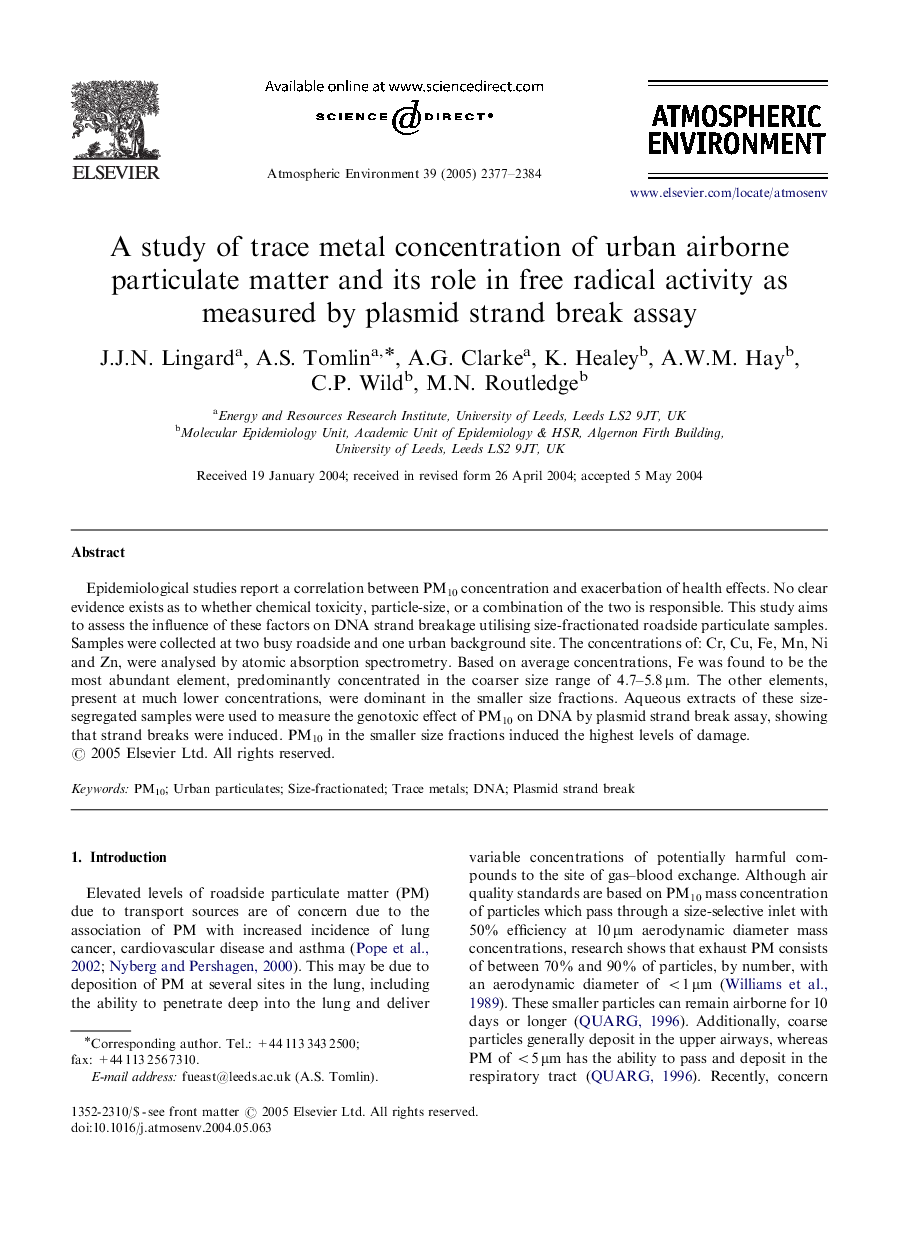| Article ID | Journal | Published Year | Pages | File Type |
|---|---|---|---|---|
| 4445546 | Atmospheric Environment | 2005 | 8 Pages |
Epidemiological studies report a correlation between PM10 concentration and exacerbation of health effects. No clear evidence exists as to whether chemical toxicity, particle-size, or a combination of the two is responsible. This study aims to assess the influence of these factors on DNA strand breakage utilising size-fractionated roadside particulate samples. Samples were collected at two busy roadside and one urban background site. The concentrations of: Cr, Cu, Fe, Mn, Ni and Zn, were analysed by atomic absorption spectrometry. Based on average concentrations, Fe was found to be the most abundant element, predominantly concentrated in the coarser size range of 4.7–5.8 μm. The other elements, present at much lower concentrations, were dominant in the smaller size fractions. Aqueous extracts of these size-segregated samples were used to measure the genotoxic effect of PM10 on DNA by plasmid strand break assay, showing that strand breaks were induced. PM10 in the smaller size fractions induced the highest levels of damage.
